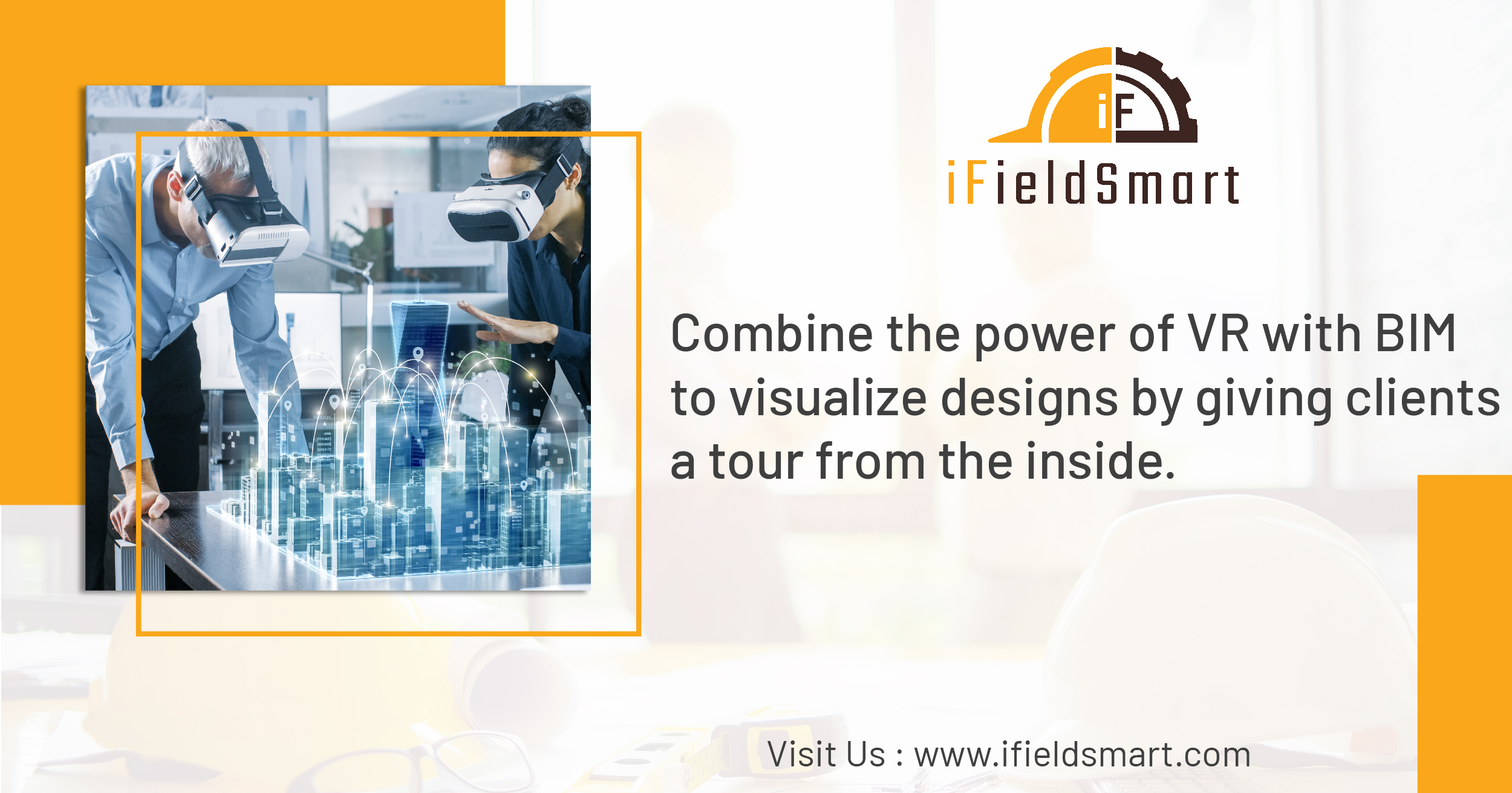
Combine the power of VR with BIM to visualize designs by giving clients a tour from the inside.
Reading Time: 3 minutesVR has stepped right in for the construction industry giving clients the capability to visualize designs by giving them a tour from the inside. The construction industry has combined the power of VR with another powerful tool i.e. BIM.
Project stakeholders like Architects and Engineers are giving clients a breathtaking experience of their projects with VR hardware and software. VR and BIM are the present of construction and will continue to be the future of it as well. The construction sector has always required processes, technology, and tools to create a thriving environment. VR has proven to be an invaluable tool for the construction sector, and it has experienced significant transformation since its inception.
Table of Contents
ToggleWhy is VR an important tool for construction?
VR has one of the most significant applications in the construction sector. The ability to view a project through virtual immersion is completely evident. The benefits of using immersive technology are evident in the construction industry. These benefits include –
- Better showcasing and presentation of projects
- High level of detail and care
- Complete elimination of design errors & miscommunication
- Comprehensive improvements in the drawing process
- Potential time savings with higher time savings
- Better onsite safety through high-quality virtual presentations
- Faster project approvals
- Enhanced team interaction
- Exceptional deliverable or product quality
- Better material cost management
- Improved resource requirements and allocation
Who has the potential to leverage the comprehensive benefits of VR?
In the right sense of application, two entities can leverage significant VR benefits.
The client – for an immersive and real-time design experience.
AEC professionals – to create effective and efficient designs.
Other VR highlights include – displaying information broad sets, showcasing 3D scenarios of real spaces, generating As-Built models, etc.
Virtual Reality (VR), when integrated with BIM, helps augment the capabilities of BIM visualization in the preconstruction phase. VR-based walkthroughs, 4D schedules, and 7D Facilities Management. Some of the benefits of VR-BIM in the construction sector include –
- Architects can extend their design capabilities
Rather than spinning up designs on paper and increasing the carbon footprint, Architects can leverage the power of 3D BIM with VR to build, view, and manage objects in real-time. Using immersive processes and technology Architects, Designers, and Engineers can create new possibilities and opportunities for design and delivery. The adoption of VR also makes it simple for the client to understand designs better, reduce material costs, and allocate resources better. The visualization aspect of VR-BIM helps augment 3D visualization, 4D Scheduling, 6D Sustainability, and 7D Facilities Management. Visualizations in terms of walkthroughs help project stakeholders visualize various perspectives viz. interior and exterior.
- Derive a better As-Built structure
Integrating VR with Reality Capture helps Architects, Designers, and Engineers understand As-Built Conditions better. It helps them take control of the existing space and optimize designs through accurate As-Built data. The adoption of VR reduces errors and onsite surprises before the actual construction begins.
- Immersive client experience for design visualization
Immersive VR helps clients move in and around the design or model before onsite construction starts. The use of VR helps build and visualize design or model prototypes to make informed decisions. Clients can take part in the design process through suggestions, feedback, and questions. Consequently, a collaborative approach helps identify and resolve challenges and overcomes project bottlenecks.
- Monitor and track building performance & progress
Not only does VR helps showcase designs, but when combined with Reality Capture helps generate accurate As-Built models. As the project moves forward, work can be scanned to build VR-compatible 3D BIM models. This helps overseas clients understand the project better, enhance decision making, fulfill contracts, etc.
- Leverage greater value with team collaboration
Project teams and clients can collaborate more efficiently in a VR setup. Better collaboration leads to fewer errors, cost reduction, and reduction in delays. VR-based workflows speed up projects and make sure the final design is similar to the proposed design.
- Data consultation
Project teams and clients can leverage data consulting through a data-rich 3D BIM model. As BIM is data or information-rich, Architects, Designers, and Engineers can explore or extract BIM data through real-time walkthroughs. VR plays a crucial role from design to construction and maintenance. The use of data consultation helps identify and resolve errors or constructability issues. Data consultation can be leveraged through cloud-based storage and collaboration for centralized storage, access, and sharing.
- Immersive VR for Facilities Management
VR-based processes and tools help Facilities Managers & Construction Personnel enhance the decision-making process. Data-rich models can be leveraged to analyze, consult, and retrieve virtual information from the BIM model. This helps Facilities Managers inspect onsite activities and resources. Onsite issues can be identified and resolved in real-time. VR-BIM enables quick and efficient installation, time savings, and cost reductions.
Closing the discussion.
The adoption and acceptance of VR-BIM in the construction sector have been expanding. The presence of VR creates a myriad of opportunities for AEC professionals to communicate clear design intent. VR-based capacities determine interesting potential and capabilities. A robust VR environment redefines communication and collaboration onsite and offsite.
The integration of VR-BIM helps project teams and clients reach complete appreciation levels between various disciplines. BIM combined with VR has the potential to innovate and evolve the construction sector. VR collaboration with BIM is said to be the future of design, construction, and management.
Visit Us:- www.ifieldsmart.com
Recent Blog Post
- The Best Construction Scheduling Software for Streamlined Project Delivery
- As-Built Documentation: The Cornerstone of Accurate Construction Records
- Why Construction Tech Adoption Fails—and What We Can Do About It
- Revolutionizing Construction Communication: The Power of RFI Construction Management Software
- Top 3 As-Built Drawings Software Providers: Revolutionizing Construction Documentation
